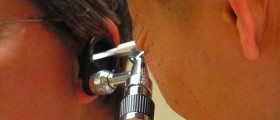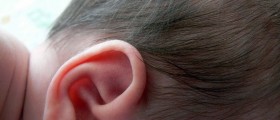Our body is full of bacteria, viruses and fungi, as well as other pathogens. As long as these foreign bodies are in some normal amounts and kept under control by the immune system, there is no danger for the organism. However, when the immune system of the body becomes weak due to various reasons, the balance between these tiny organisms is impaired and they cause infections in some part of the body.
When the fungi overproduce themselves in the linings of the outer part of the ear and in the ear canal, a fungal infection accompanied by the inflammation, itching and pain occurs. The medical name for this infection is otomycosis. The infection of the outer ear is medically named as otitis externa.

- Fungi causes 10% of all cases of otitis externa. In the recent years there has been an increase in the incidence as a result of possibly huge number of immunocompromised patients.
- General cellular immunity is reduced in situations such as diabetes, steroid administration, HIV infection, chemothraphy and malignancy (especially those involving cells of immune system).This makes an immunocompromised host susceptible to fungal infections. Normal bacterial flora is one of the host defense mechanism against fungal infections. This mechanism is altered in patient patients using antibiotics ear drops and cause otomycosis.
- Otomycosis is sporadic and caused by a wide variety of fungi, most of which are saprobe occurring in diverse type of environmental material. It affects 10% of the population in their life time. Fungi are abundant in soil or sand which contains decomposing vegetable matter. This is desiccated rapidly in tropical sun and blown in wind as small dust particles.
- Among the fungi, the species of Aspergillus are considered the predominant organisms implicated in the etiology of otomycosis in tropical countries. Many studies have shown that Aspergillus species was the commonly isolated fungus and Candida was next commonly isolated fungi, in immunocompetent hosts.
Causes of Ear Infection
Fungi tend to multiply in moist and warm areas on our body since that kind of environment suits them best. The ear canal is one such areas, it is dark, moist and warm and thus, it is susceptible to the growth of fungi. There are several conditions that usually contribute to the occurrence of fungal infection in ear. When the ear canal is injured, it may cause the overproduction of fungi. Those people who already have some skin disorders developed, like psoriasis or acne or eczema, are prone to development of fungal ear infection.
Furthermore, excessive sweating or perspiration, as well as high humidity and high temperatures, may also be responsible for the incidence of fungal infection in ear. It is also considered that overproduction of the fungi can be triggered by inserting many objects in the ear, like cotton swabs and fingernails. The people whose immune system is weak because they are already suffering from HIV/AIDS, or some respiratory disease are at high risk of contracting fungal ear infection.
Symptoms of Fungal Ear Infection
Fungal infection in the auditory organs causes several symptoms apart from the pain and inflammation. The most typical warning signs of this condition include crusty and dry skin, itching sensation and excessive production of pus. The one with fungal ear infection may have severe discomfort in the ears, as well as debris that contains fungal hyphae. The sample of this debris is taken by a doctor in order to be analyzed when the doctor suspects that the patient suffers from fungal ear infection.
Fungal infection in the ears may cause problems with hearing and even loss of hearing. In some people, tinnitus may occur. Tinnitus is the condition that manifests through the awkward ringing in the ears.

















Your thoughts on this
Loading...